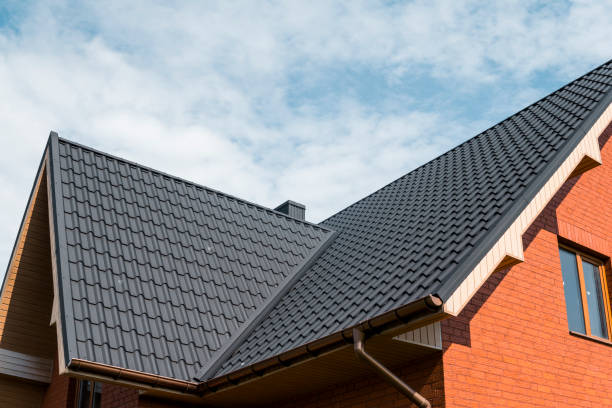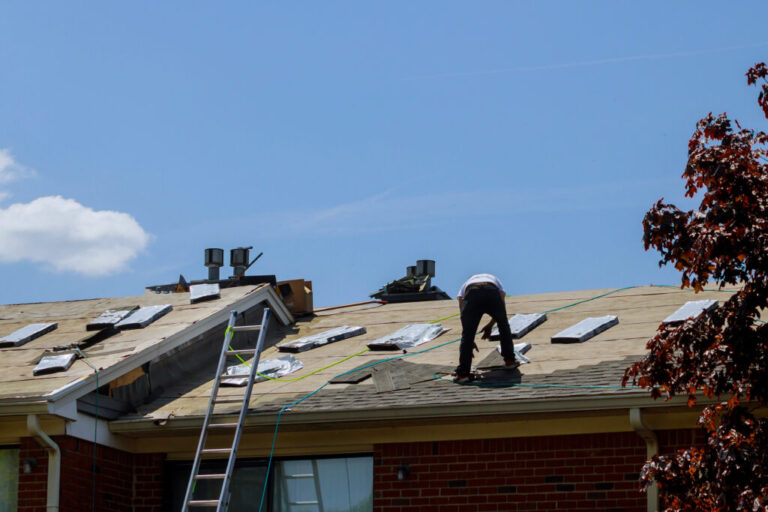Imagine wearing the same outfit for decades. No matter your mood, no matter the season, no matter your personality, physique, or current styles, you always wear the brown suit. I hope you like it. In fact, I hope it is tailor made, a perfect fit. When you purchase a roof you are making a fashion statement that you, as well as your home, must live with for a long time.
A roof is much more than mere fashion, of course. Utilitarian qualities such as weight, impact resistance, reflectivity, insulation value and wind resistance are equally important. In this article I discuss 5 popular roof systems and their respective pros and cons. Perhaps I can direct you to that beloved, timeless shirt… a perfect roof for your home — a roof for all seasons.
Clay (concrete) Tiles
Modern construction generally involves fast installations and lightweight, inexpensive materials. Clay tiles, even with modern tools and specialty materials, could never be described as fast (especially if the roof is cut-up) or cheap. However, if you’ve got deep pockets and want a roof your grandchildren could enjoy, clay might be the perfect roof for your home. You’ll pay three or four times the cost of a shingle roof, but if you want the look of western luxury or European ambiance nothing beats the real thing.
Nearly as heavy as slate, many modern stick framed homes are not designed to carry the extra weight of clay tiles, so structural reinforcements may be necessary. Important workmanship details will make or break the true life expectancy of clay tiles. All material accessories should be of the highest quality to prevent premature failures in areas such as valleys, chimneys, and other roof fixtures. For example, stainless steel fasteners and lead or copper flashing are necessities, as well as proper ventilation. Long life expectancy, increased energy efficacy, and classic good looks are all pros, while expense is the biggest con. People move on average every 7 or eight years, therefore, few can justify a roof for the generations, but on the right house and given enough time, clay roofs will pay for themselves.
Wood Shakes (shingles)
Lightweight, yet wind resistant, and good insulators, wood shakes combine the natural beauty and warmth of wood to turn your house into a home. Reminiscent of simpler days from wood rich early America, wood shakes soften the roofline and are visually inviting. Modern architectural shingles generally attempt to capture the three dimensional, random look of wood shakes. Today’s installations incorporate modern underlayment that greatly extends life expectancy. Properly installed shakes often last 30 to 50 years — comparable to a premium shingle roof and about twice the life expectancy of contractor grade shingles.
Unfortunately, cost can be prohibitive as you can expect to pay at least 3 times the cost of an asphalt shingle roof. Other drawbacks include high maintenance cost and high flammability (flame resistant shakes are available). Also, wood shakes should be avoided in areas of high rainfall, as shakes require good ventilation and should not stay constantly wet. Lastly, as a natural product, wood shakes will draw life of all kinds creating a roof ecosystem teaming with insects and plant-life by the time replacement is warranted.
Slate
No other roof compares to the natural beauty of slate. Colors range from jet-black to grey, brown, green, and even red and purple. Colors can vary from one batch to the next, one slate to the next, and even within each slate shingle. No man-made, mass produced roofing product could ever exactly replicate the natural color variance. Each slate is hand-split to the proper thickness. Heavy (often over 1000 pounds per square) and nearly impervious to the elements, slate roofs can easily exceed 100 years of service.
A slate roof requires the best workmanship and accessories available. Slate will outlast the underlayment and even the decking of our modern homes. Only real wood (not glued wood products) can support these timeless roofs. Very few roofing contractors can match the timelessness of slate with the world-class workmanship needed to realize the inherent potential longevity. Choose your roofer wisely because at five times (or greater) the cost of asphalt shingles, this is not a system easily repaired or replaced.
Metal
Metal is perhaps too ambiguous a title for this class of roofing materials. Metal usually means cooper, aluminum, or steel as shingles or factory produced panels — metal ranges widely in quality and therefore, longevity.
Aluminum is common as a lightweight alternative over carports and enclosed porches capable of spanning long lengths unsupported and serving as the finished roof system to boot. Aluminum forms a thin protective layer of aluminum oxide when exposed to oxygen, this “rusting” is different from iron in that the oxide actually prevents further exposure of the highly reactive aluminum metal. This patina is why we consider aluminum to be resistant to corrosion.
Most roofers use aluminum as step flashing or roll flashing in certain situations such as transitioning from an aluminum roof to a shingle roof. Aluminum is easily damaged by hail and is easily ripped. It is not uncommon for inexperienced roofers to rip aluminum flashing during tear-offs. Aluminum should not be used as counter-flashing for this reason as counter-flashing is not easily replaced.
Copper, like aluminum, oxidizes to form a protective patina; it just takes longer. Eventually, that new penny look transforms to the classic blue/green/black hues of aged copper. I love working with copper for its beauty but also for its malleability. The ability to be shaped easily is a huge advantage over other metals, especially in difficult or detailed roofing situations.
Copper is used primarily as a high-end decretive accent in that the majority of the home or business will be roofed with a less expensive material (typically asphalt shingles) while porch slopes or bay windows will use copper. Copper is the ideal metal for counter flashing as well as certain other flashing applications.
Steel is by far the most affordable and most common. Galvanized or primed and painted, steel is available in several different “gauges” or thicknesses, the lower the gauge, the thicker the metal. Most of our commercial roofing work, we will use 24 or 26-gauge metal, where as the majority of residential roofing work calls for 29-gauge metal. Steel is hard and strong, much harder than copper or aluminum. However, like Achilles, steel has a significant weakness: it will rust, and rust, and rust, no protective patina, just more rust — until it’s gone.
Our answer to this inherent weakness is to apply protective coatings. Fortunately, factory primed and painted metal can last a long time, as long as 30-50 years. As long as the metal is still sound, nothing would prevent this roof from again being repainted. Be aware, any subsequent coats typically will not last more than 10 years; field conditions and products just can’t match the manufacturer.
If you’re in the market for a new metal roof for your home or business I strongly recommend standing seam. In fact, if you hire Dowell Roofing, standing seam will be your only option. We stopped installing metal panels using exposed fasteners about 10 years ago. Standing seam, if properly installed, has no exposed fasteners. Each panel is clipped or screwed in place so that the next panel covers the fasteners of the previous panel.
Asphalt Shingles
Asphalt shingles dominate the modern American roofing market. Why not? From a roofer’s perspective, they are extremely versatile, easily tooled and manipulated. A master roofer can shingle just about any roof efficiently, saving valuable labor and material. If a roofer is conscientious, entire roofs can be installed with very little waste, especially compared to the poundage of broken tiles or slates. When you chose Dowell Roofing, your old roof will be ground up and turned into asphalt to pave streets and parking lots. We recycle nearly 100% of the old roofs torn-off (as well as any waste produced during our installation).
Modern shingles incorporate decades (centuries, really) of material and field experience. Today’s shingles incorporate the timeless waterproofing and adhesive nature of “tar”, the ultraviolet light resistance of “stone” as well as relatively new materials like fiberglass, all engineered together for maximum effect both in beauty and strength. Shingles can mimic the look of cedar shakes or quarried slate at a fraction of the cost. Tough, relatively lightweight, and cost-effective, they are designed to complement modern construction. Other modern materials, like plastics, have tried to challenge the asphalt shingles dominance, however, the asphalt shingle still reigns supreme. A word of warning — not all shingles are created equal. Quality amongst competing manufactures is a moving target. If you want to know the best manufacture or the best brand, any given year, then you want to know what Dowell Roofing is installing. We buy in such bulk that price is not an issue. We get competitive pricing no matter the manufacturer; therefore, you get access to the best brands. Best shingles, best roofers, it must be a Dowell Roof.
No matter your choice of material, if you want excellence in roofing, then you want the American craftsmanship of Dowell Roofing. You select the suit; we’ll tailor it to be a roof for all seasons.
About the author: Joseph Dowell has operated a roofing company based out of Murfreesboro, TN for over twenty years. Dowell Roofing services Rutherford County (including Murfreesboro, Smyrna, and LaVergne) as well as surrounding Middle Tennessee counties. To learn more visit DowellroofingTN.com.









